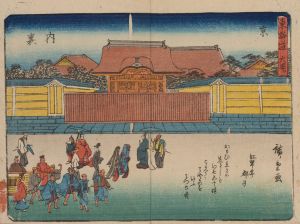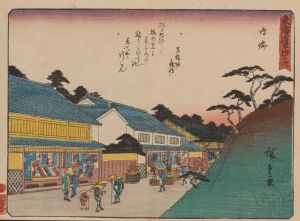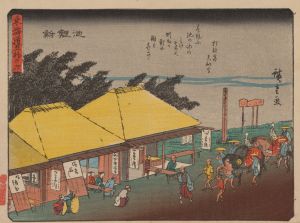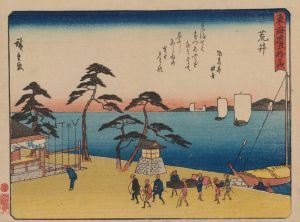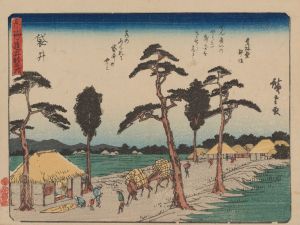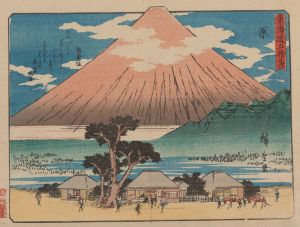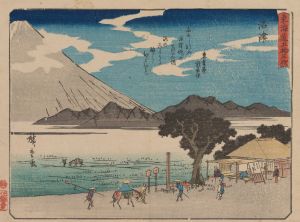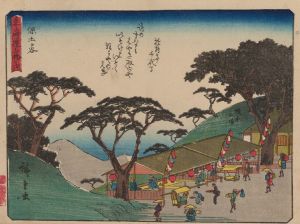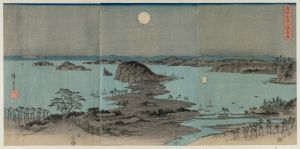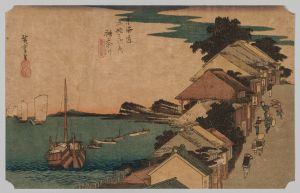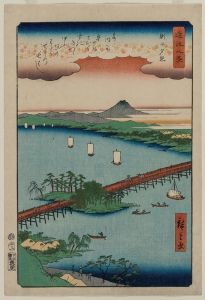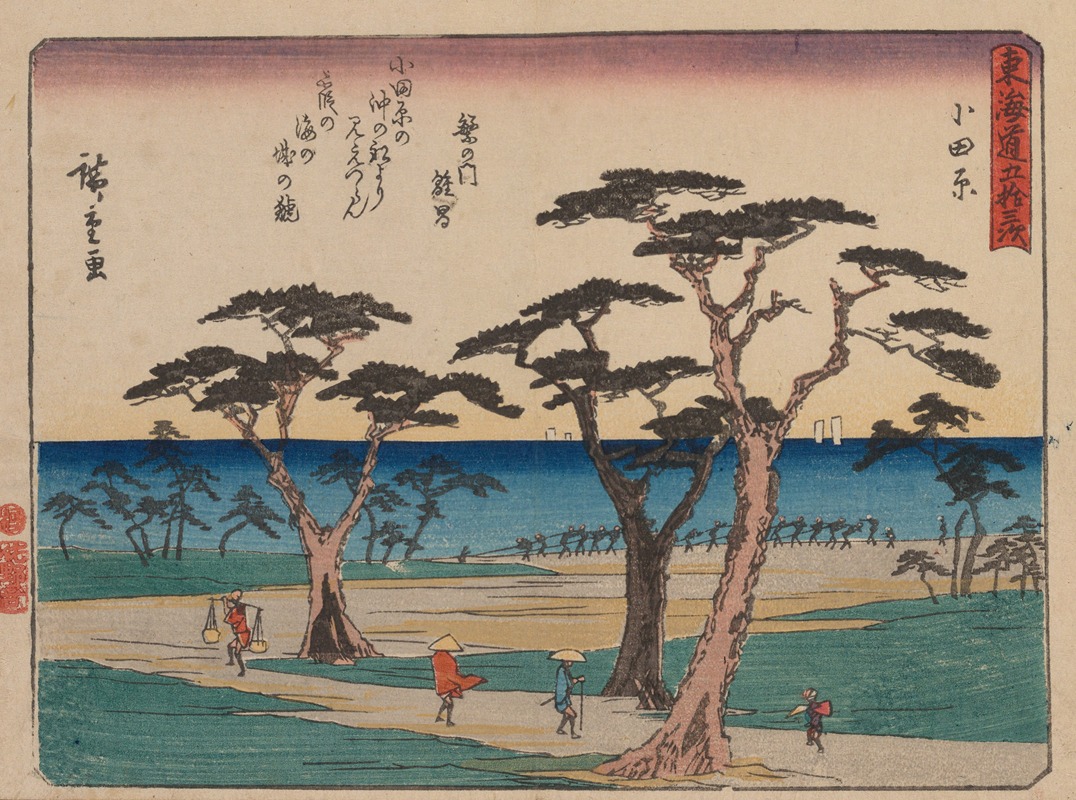
Tokaido gojusantsugi, Pl.10
A hand-painted replica of Andō Hiroshige’s masterpiece Tokaido gojusantsugi, Pl.10, meticulously crafted by professional artists to capture the true essence of the original. Each piece is created with museum-quality canvas and rare mineral pigments, carefully painted by experienced artists with delicate brushstrokes and rich, layered colors to perfectly recreate the texture of the original artwork. Unlike machine-printed reproductions, this hand-painted version brings the painting to life, infused with the artist’s emotions and skill in every stroke. Whether for personal collection or home decoration, it instantly elevates the artistic atmosphere of any space.
Andō Hiroshige, a renowned Japanese ukiyo-e artist of the Edo period, is celebrated for his landscape prints and depictions of everyday life in Japan. One of his most famous series is "The Fifty-three Stations of the Tōkaidō" (Tōkaidō Gojūsan-tsugi), which illustrates the scenic journey along the Tōkaidō road, a vital route connecting Edo (modern-day Tokyo) to Kyoto. This series, created after Hiroshige's own travels along the Tōkaidō, captures the diverse landscapes and cultural landmarks encountered along the way.
Plate 10 of this series, known as "Tokaido gojusantsugi, Pl.10," corresponds to the station of Hakone. Hakone was the tenth station on the Tōkaidō road and is renowned for its mountainous terrain and hot springs. Hiroshige's depiction of Hakone captures the rugged beauty and challenging nature of this part of the journey. The print typically features steep mountains, winding paths, and travelers navigating the difficult terrain, often with Mount Fuji visible in the background, symbolizing the quintessential Japanese landscape.
Hiroshige's work is characterized by its use of perspective and attention to detail, which bring the scenes to life. His prints often include human figures, such as travelers, porters, and local inhabitants, which add a narrative element to the landscapes. The use of vibrant colors and dynamic compositions in Hiroshige's prints reflects the ukiyo-e style, which was popular during the Edo period. This style emphasizes the beauty of the natural world and the transient moments of everyday life.
The "Fifty-three Stations of the Tōkaidō" series was published in the early 1830s and became immensely popular, establishing Hiroshige's reputation as a master of landscape prints. The series not only served as a visual travelogue for those who could not journey along the Tōkaidō themselves but also as a celebration of Japan's natural beauty and cultural heritage. Hiroshige's innovative approach to composition and his ability to capture the essence of each station made the series a significant contribution to the ukiyo-e genre.
Hiroshige's prints, including Plate 10, have been influential both in Japan and internationally. They have inspired numerous artists, including European Impressionists such as Vincent van Gogh and Claude Monet, who admired Hiroshige's use of color and perspective. Today, Hiroshige's works are held in high regard and are featured in major art collections and museums around the world.
In summary, "Tokaido gojusantsugi, Pl.10" by Andō Hiroshige is a quintessential example of the artist's skill in capturing the beauty and challenges of the Japanese landscape. Through his detailed and vibrant depiction of Hakone, Hiroshige offers a glimpse into the historical and cultural significance of the Tōkaidō road, making this print an enduring piece of Japanese art history.





